Our Lady of Perpetual Help Roman Catholic Church
425 North Central Avenue
Campbellsville, KY
Images
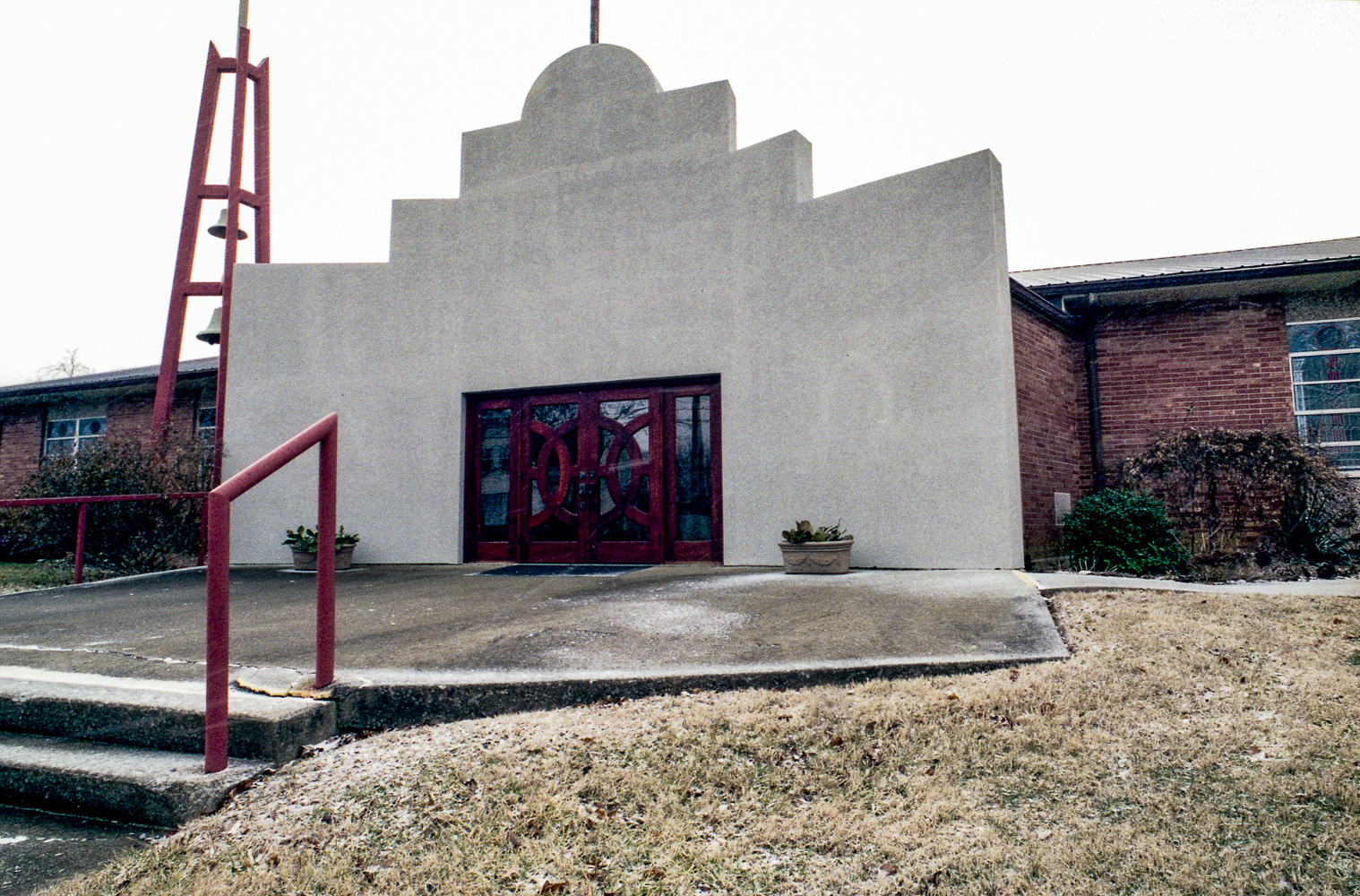 2014-02-06 - Church exterior (Photograph by Ken Stein, photographybystein.com, submitted by Jeff Scofield/Jeff Scofield)
2014-02-06 - Church exterior (Photograph by Ken Stein, photographybystein.com, submitted by Jeff Scofield/Jeff Scofield)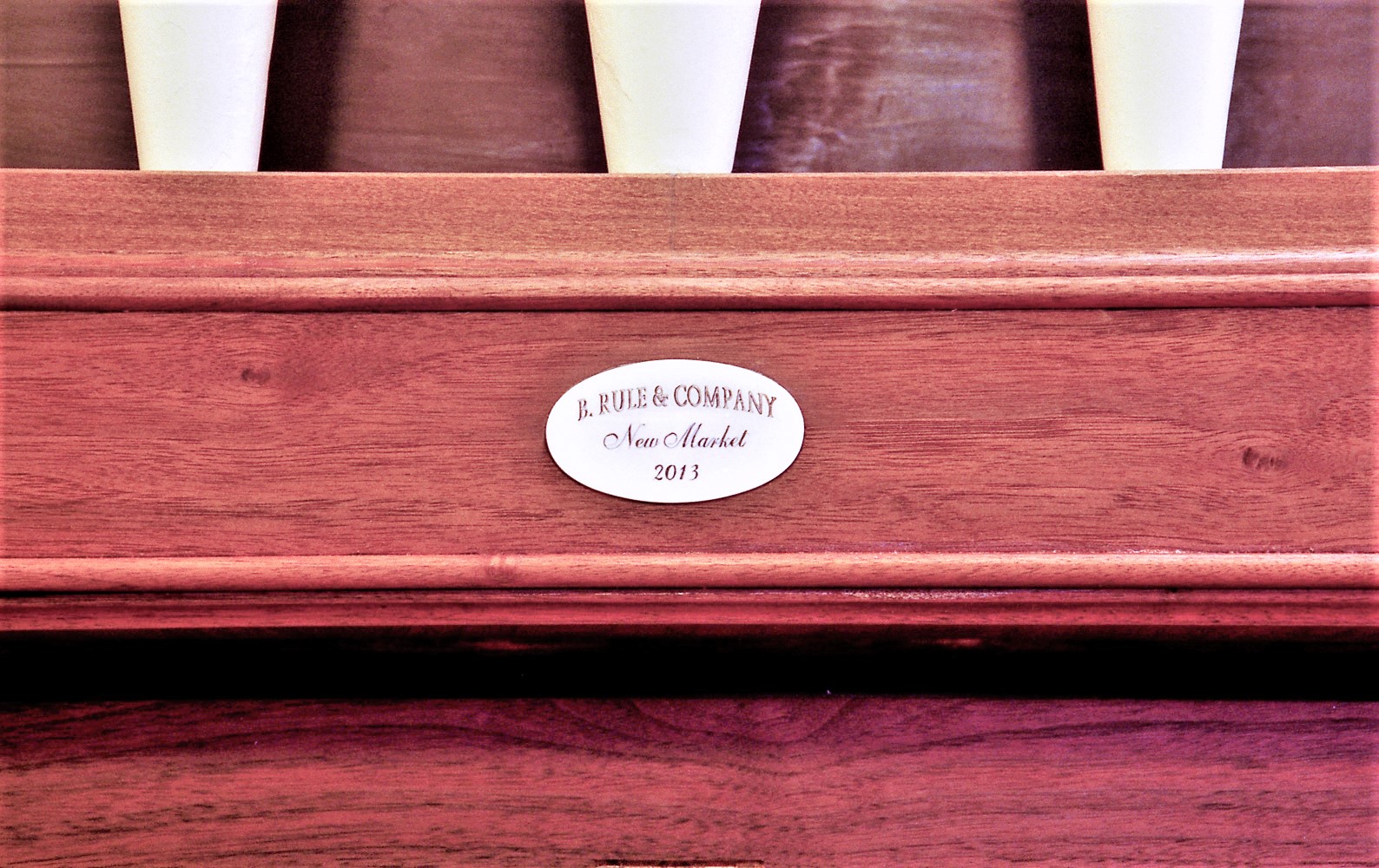 2016-02-04 - B. Rule builder plate (Photograph by Ken Stein, photographybystein.com, submitted by Jeff Scofield/Jeff Scofield)
2016-02-04 - B. Rule builder plate (Photograph by Ken Stein, photographybystein.com, submitted by Jeff Scofield/Jeff Scofield) 2014-02-06 - Pomplitz builder plate (Photograph by Ken Stein, photographybystein.com, submitted by Jeff Scofield/Jeff Scofield)
2014-02-06 - Pomplitz builder plate (Photograph by Ken Stein, photographybystein.com, submitted by Jeff Scofield/Jeff Scofield)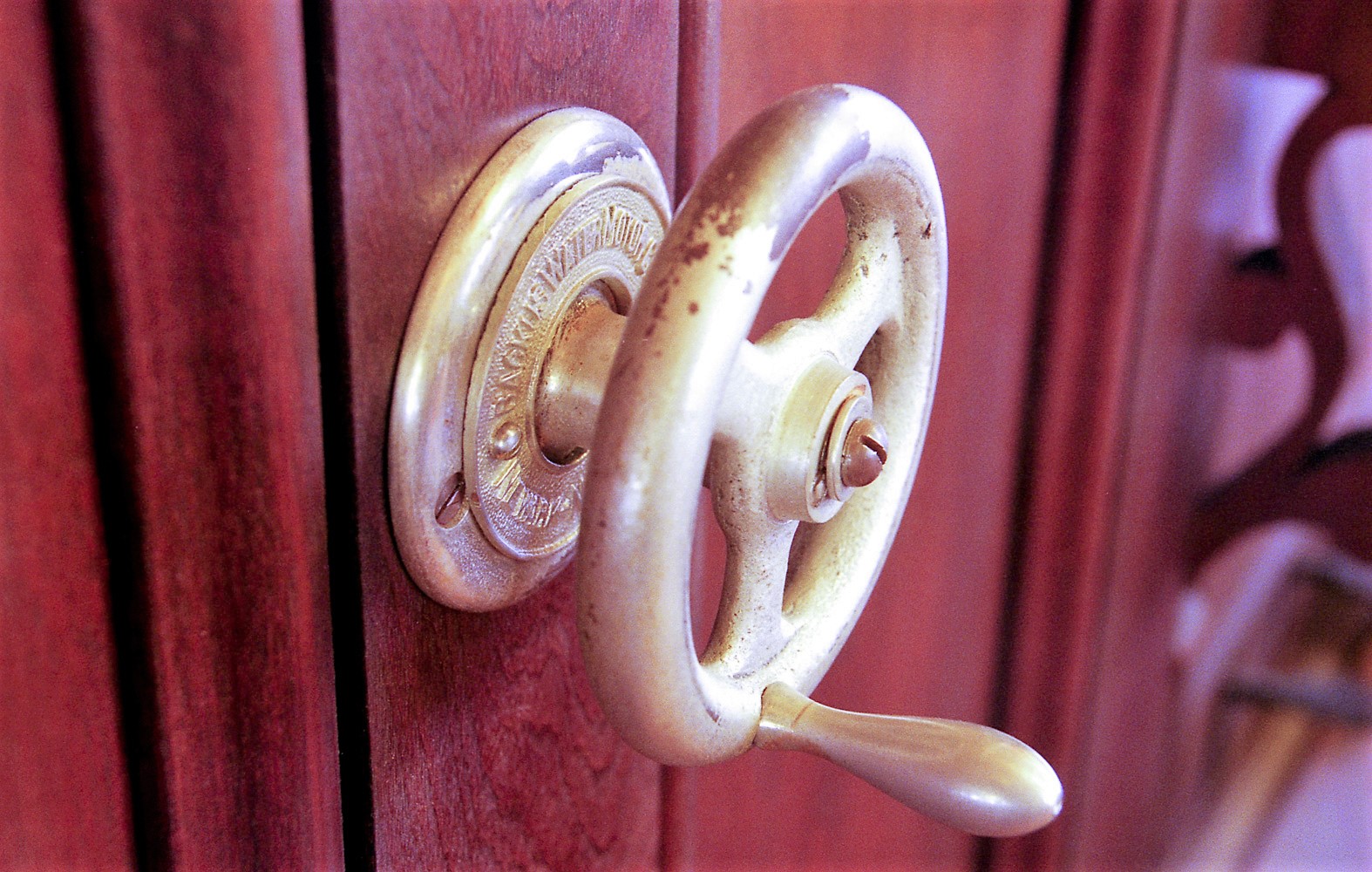 2014-02-06 - Water motor console (Photograph by Ken Stein, photographybystein.com, submitted by Jeff Scofield/Jeff Scofield)
2014-02-06 - Water motor console (Photograph by Ken Stein, photographybystein.com, submitted by Jeff Scofield/Jeff Scofield)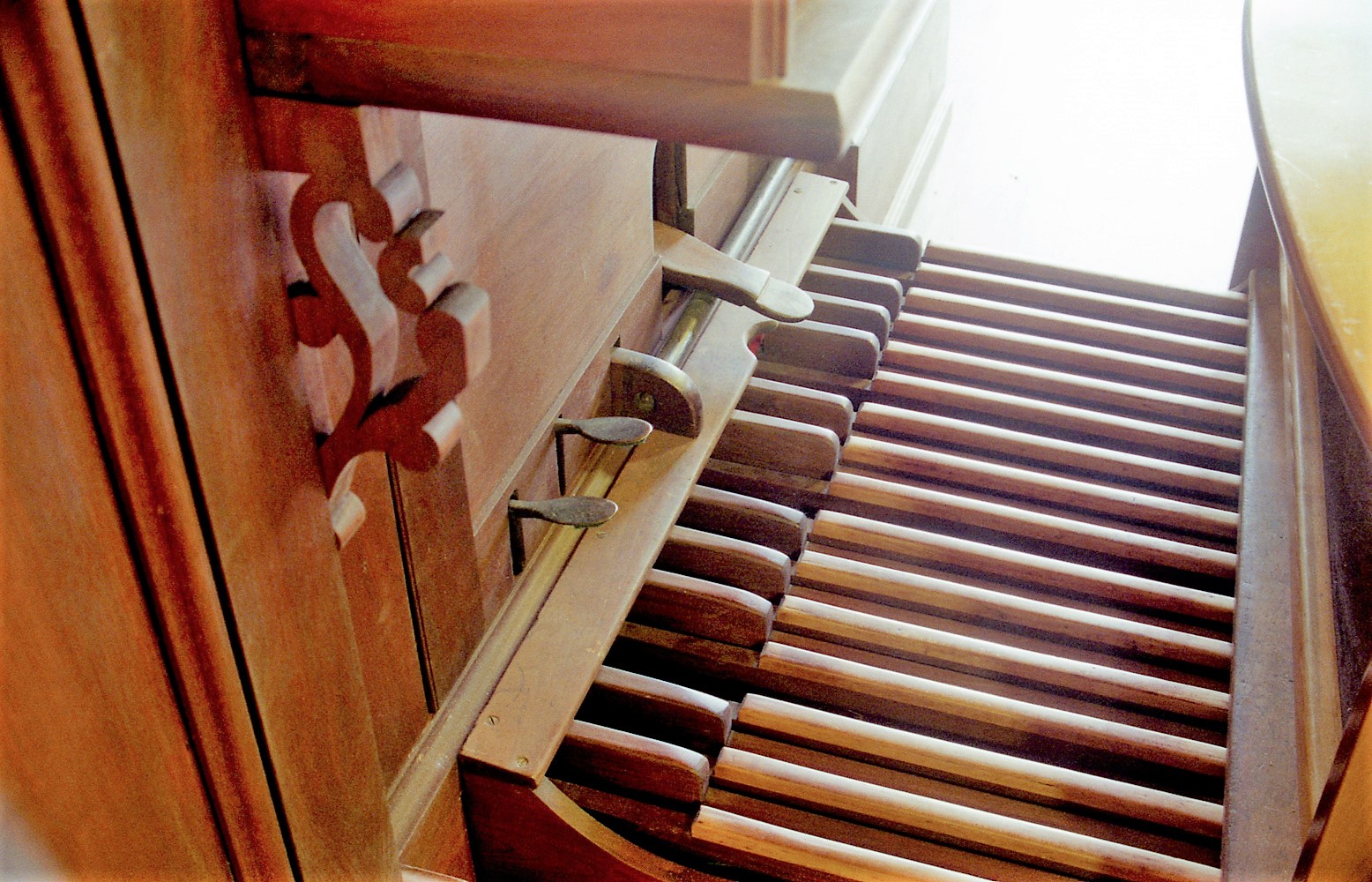 2014-02-06 - Pedalboard (Photograph by Ken Stein, photographybystein.com, submitted by Jeff Scofield/Jeff Scofield)
2014-02-06 - Pedalboard (Photograph by Ken Stein, photographybystein.com, submitted by Jeff Scofield/Jeff Scofield)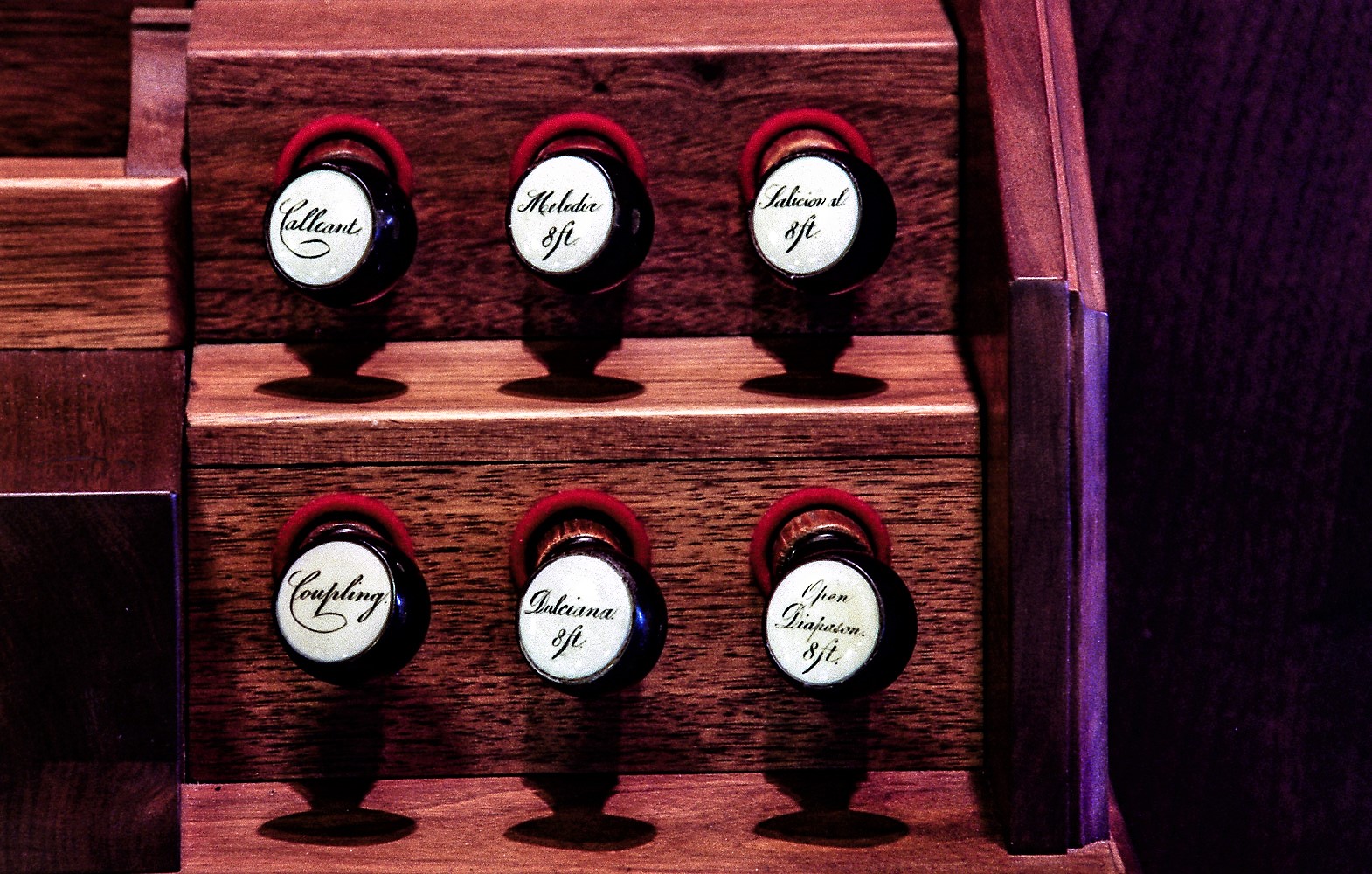 2014-02-06 - Right stopjamb (Photograph by Ken Stein, photographybystein.com, submitted by Jeff Scofield/Jeff Scofield)
2014-02-06 - Right stopjamb (Photograph by Ken Stein, photographybystein.com, submitted by Jeff Scofield/Jeff Scofield)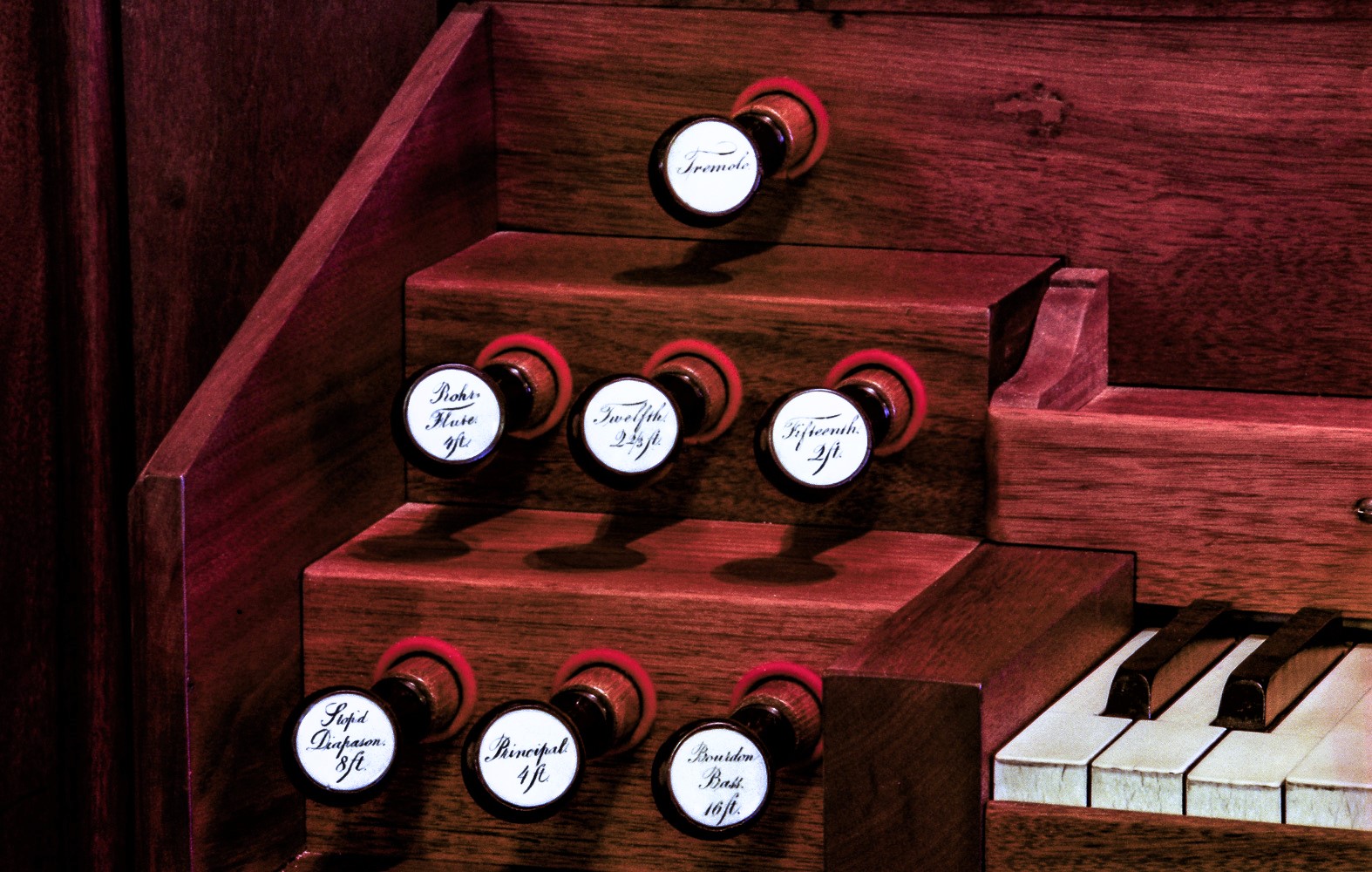 2014-02-06 - Left stopjamb (Photograph by Ken Stein, photographybystein.com, submitted by Jeff Scofield/Jeff Scofield)
2014-02-06 - Left stopjamb (Photograph by Ken Stein, photographybystein.com, submitted by Jeff Scofield/Jeff Scofield)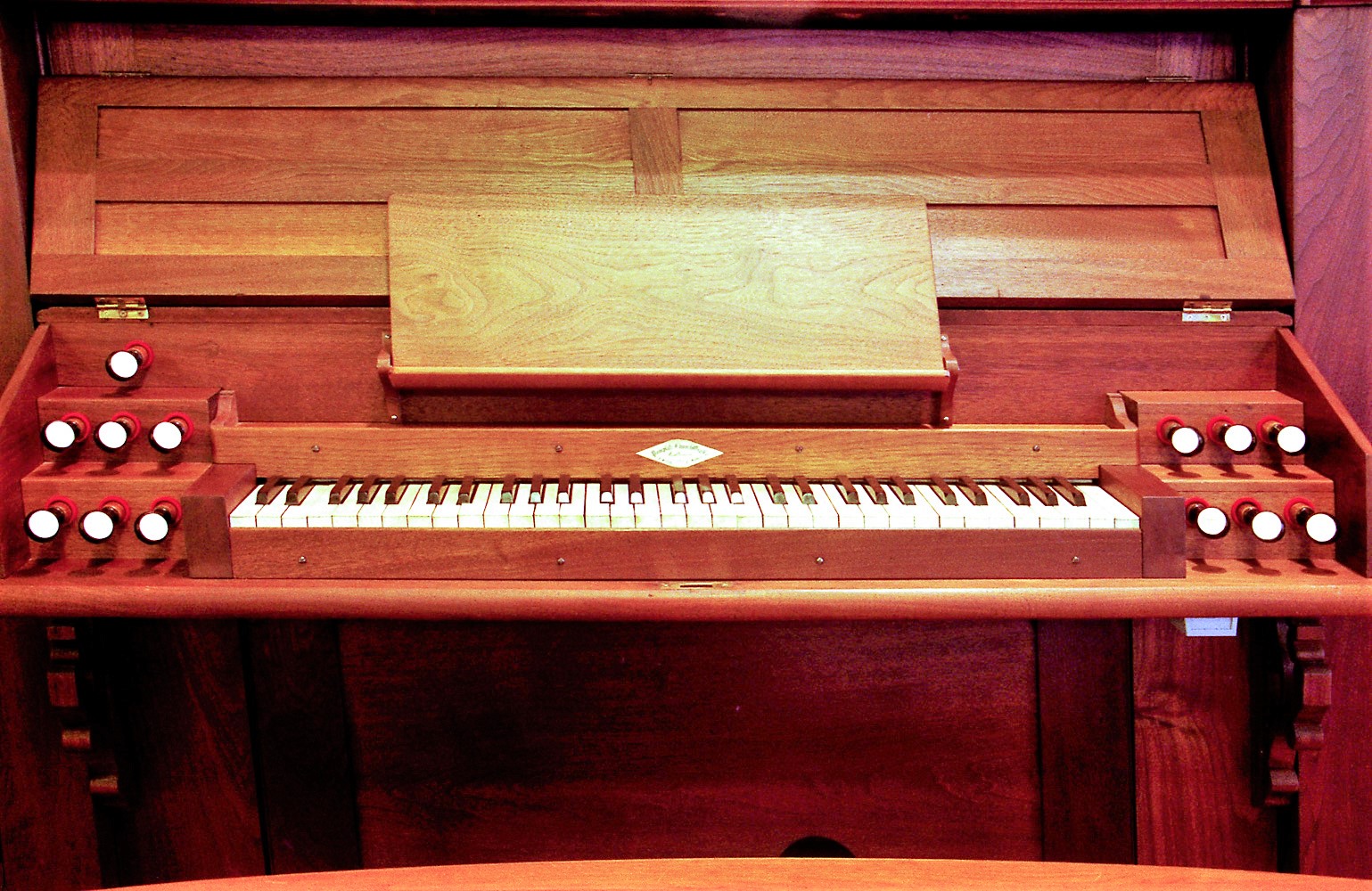 2014-02-06 - Keydesk (Photograph by Ken Stein, photographybystein.com, submitted by Jeff Scofield/Jeff Scofield)
2014-02-06 - Keydesk (Photograph by Ken Stein, photographybystein.com, submitted by Jeff Scofield/Jeff Scofield)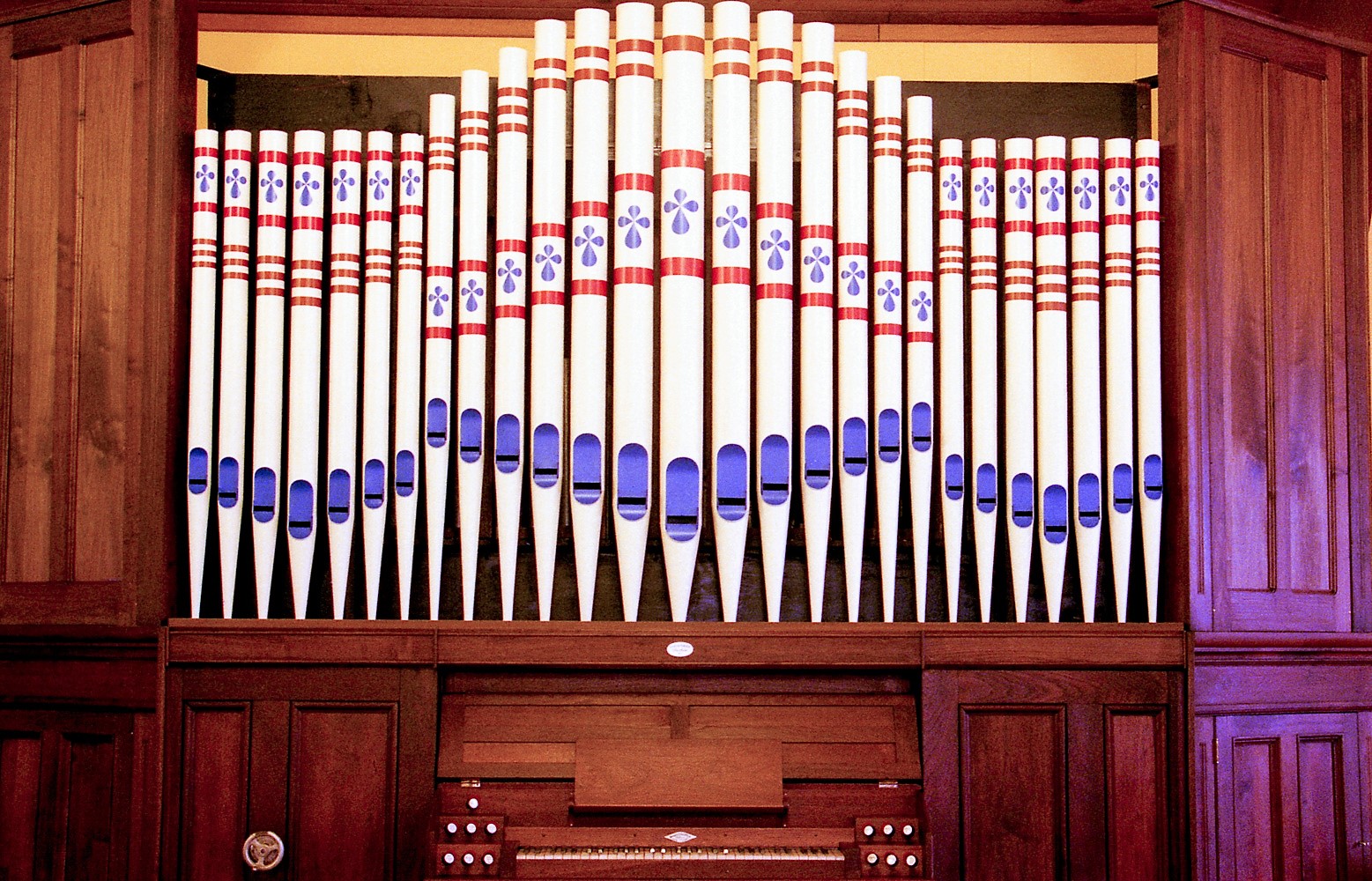 2014-02-06 - Organ case façade pipes (Photograph by Ken Stein, photographybystein.com, submitted by Jeff Scofield/Jeff Scofield)
2014-02-06 - Organ case façade pipes (Photograph by Ken Stein, photographybystein.com, submitted by Jeff Scofield/Jeff Scofield)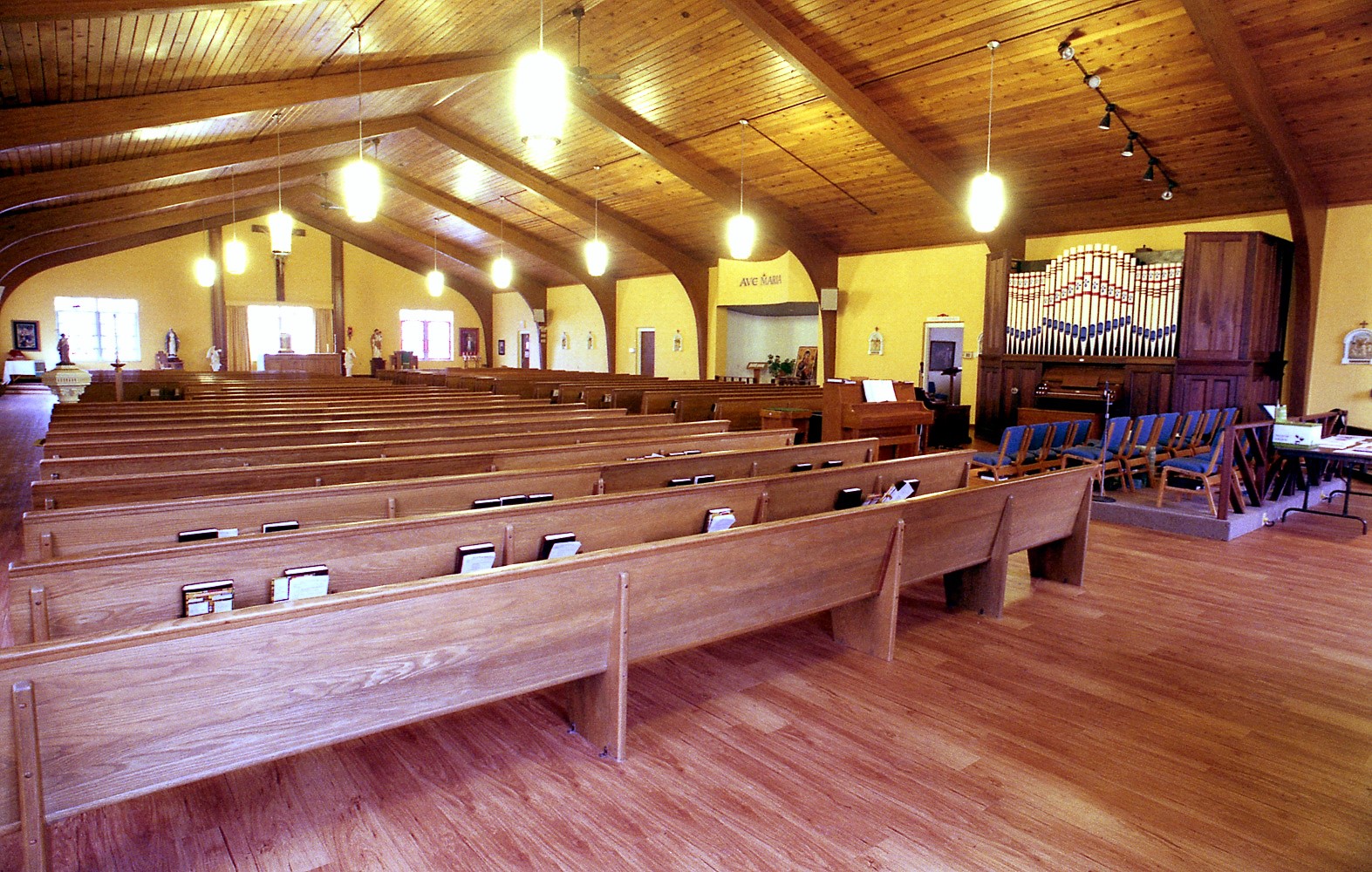 2014-02-06 - Church interior and organ (Photograph by Ken Stein, photographybystein.com, submitted by Jeff Scofield/Jeff Scofield)
2014-02-06 - Church interior and organ (Photograph by Ken Stein, photographybystein.com, submitted by Jeff Scofield/Jeff Scofield)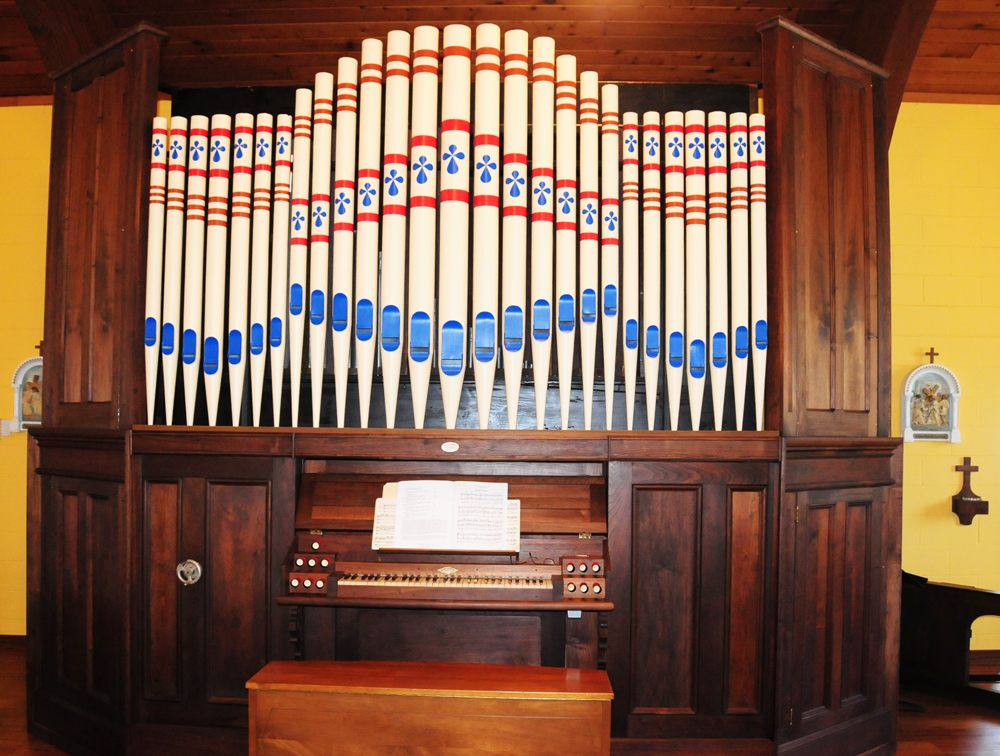 2013-09-26 - Organ facade with polychrome stenciling and banding by a church volunteer. (Photograph by Bradley Rule/Database Manager)
2013-09-26 - Organ facade with polychrome stenciling and banding by a church volunteer. (Photograph by Bradley Rule/Database Manager)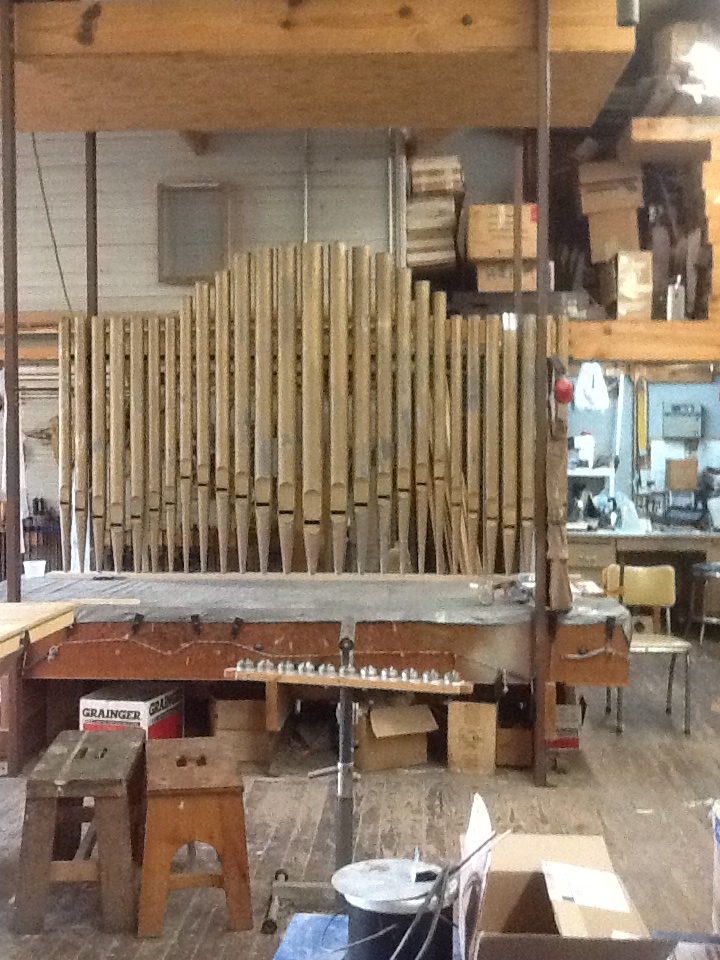 2013-05-06 - Pomplitz facade pipes being repaired and racked at the B. Rule & Company shop. (Photograph by Bradley Rule/Database Manager)
2013-05-06 - Pomplitz facade pipes being repaired and racked at the B. Rule & Company shop. (Photograph by Bradley Rule/Database Manager)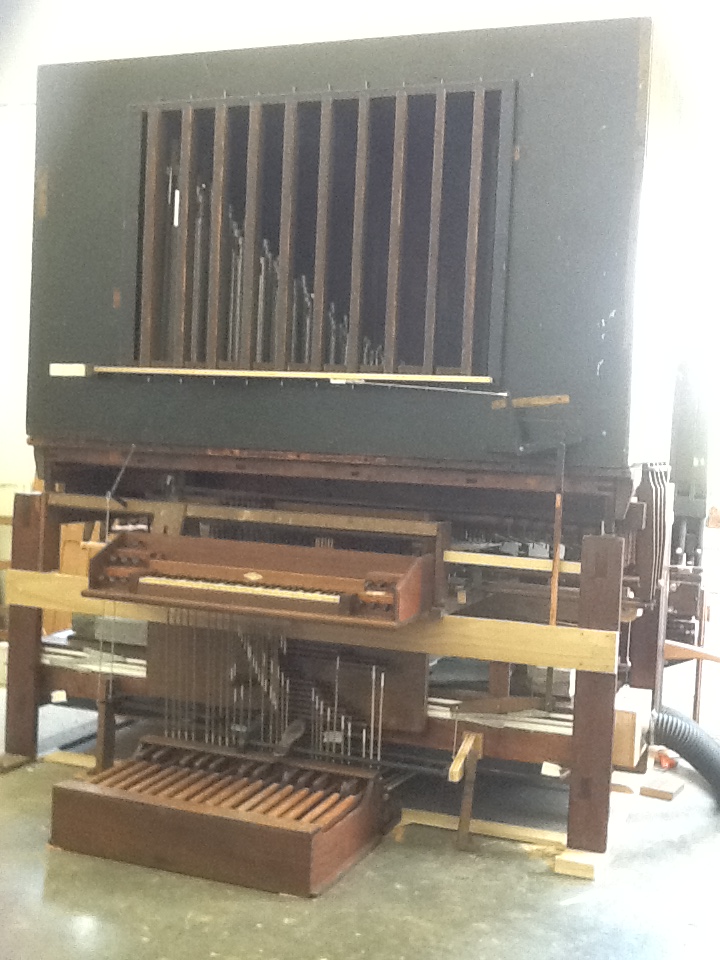 2013-05-06 - Pomplitz organ front view, without casework, near completion of renovation at the B Rule & Company shop. (Photograph by William Dunklin/Database Manager)
2013-05-06 - Pomplitz organ front view, without casework, near completion of renovation at the B Rule & Company shop. (Photograph by William Dunklin/Database Manager)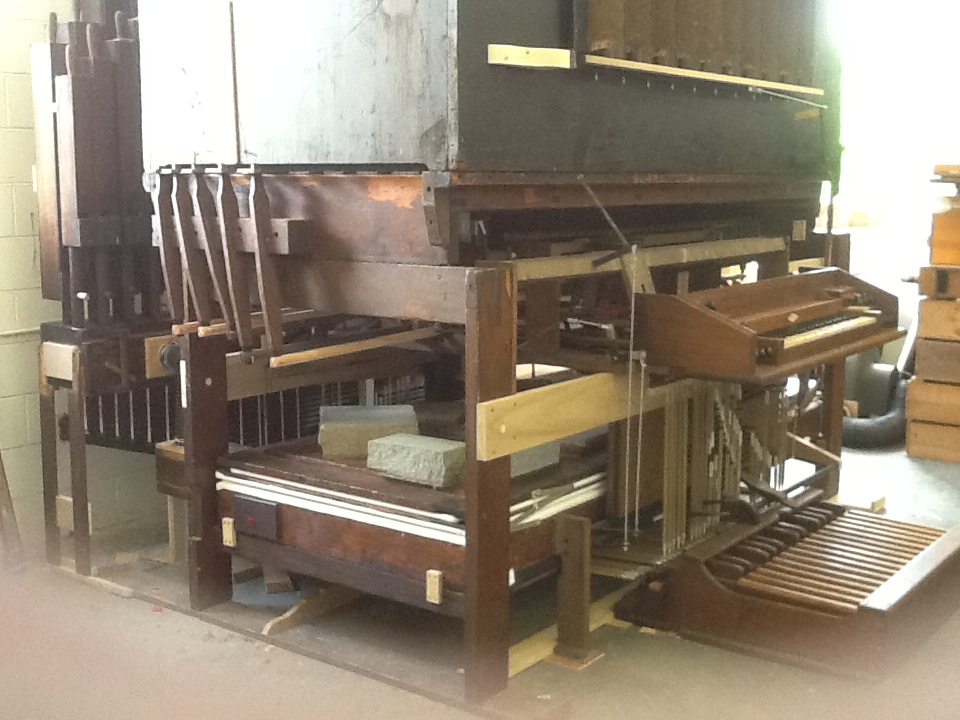 2013-05-06 - Pomplitz organ, bass side view (Photograph by Bradley Rule/Database Manager)
2013-05-06 - Pomplitz organ, bass side view (Photograph by Bradley Rule/Database Manager)
Consoles
Main
- Organ type: Traditional With a Keyboard Cover That Can Be Lifted To Form a Music Rack
- Console position: Keydesk Attached
- 1 manuals
- Key action Type: Mechanical (Balanced Tracker)
- Stop action Type: Mechanical
- Stop layout Type: Drawknobs in Horizontal Rows on Terraced/Stepped Jambs
- Pedal Type: Flat Straight
- Expression Type: Balanced Expression Shoes/Pedals (Details Unknown)
- Combination action: None
Notes
2013-05-10 - This is a rebuild of an existing organ.
Identified by William Dunklin, based on information learned from a conversation with
Bradley Rule.
-- Our Lady of Perpetual Help is the 3rd and possibly the 4th home for this organ. It seems that the original installation was in, or near, Harrisonburg, Virginia (we do not know the name of the church). Its most recent home was an AME church in Cumberland, Maryland. It may have been somewhere else in between. The information is solely based on the old railroad shipping labels on the swell box panels. The Harrisonburg label is clearly much older than the newer paper labels sending it to Cumberland Maryland. <br>The organ had been in storage for a significant period of time. It arrived in the B. Rule & Company shop mostly complete, but missing significant portions of the case and various parts of the action and chassis. <br>The donor, Lloyd Farrar, who paid for the entire project, requested as close to a historical restoration as possible. Significantly, the organ remains pitched sharp, roughly A=451 and the 27 note, flat, straight pedal board is shifted about 3 notes to the right of modern placement. -Database Manager
2013-05-11 - Updated through online information from William Dunklin. -Database Manager
2013-10-08 - Updated through online information from William Dunklin. -- As mentioned previously, the organ arrived at B Rule & Company missing most of its original case. The panels on either side of the console appear to be Pomplitz work, but had been considerably altered. The lower parts of the angled sections are obviously from a different and unknown organ. The upper case portions were built new. The facade pipe stenciling and paint colors were not part of the organ builders contract. A local volunteer provided that service. Despite the significant changes to the case, the pipes were not altered beyond cleaning, repair, regulating and tuning. -Database Manager
Stoplist
from B. Rule & Company paperwork. Source: Source not recorded Date not recorded
Pomplitz organ circa 1875.
Manual:
8' Open Diapason 61 pipes, 1-12 stopped wood
8' Stopped Diapason 61 pipes, metal chimney flutes from F30 to top
8' Melodia 49 pipes, 1-12 common bass with the Stopped Diapason
8' Dulciana 61 pipes, 1-12 stopped wood
8' Salicional 49 pipes, 1-12 common bass with the Dulciana
4' Principal 61 pipes, metal
4' Rohr Flute 61 pipes, 1-12 wood, 13-61 metal
2 2/3' Twelth 61 pipes, metal
2' Fifteenth 61 pipes, metal
Tremolo
Pedal:
16' Bourdon 27 pipes
Manual to Pedal Coupler
All manual pipes are enclosed in the swell box.
The Pedal 16' Bourdon is outside the swell box.
There is no "Stopped Diapason Bass" knob. Each 8' rank has its own stopped wood bass as
described above. Where 2 ranks share one set of bass pipes, they are grooved together in the windchest.
The facade pipes are all dummies. The facade pipes had been seriously battered. B. Rule & Company
repaired the facade pipes, but students at the local college Art Department provided the decorative
painting.
[Received from William Dunklin 2013-05-11.]
Other Links
Regrettably, it is not possible to display the information about the sponsor of this pipeorgandatabase entry or if there is a sponsor. Please see About Sponsors on Pipe Organ Database.













